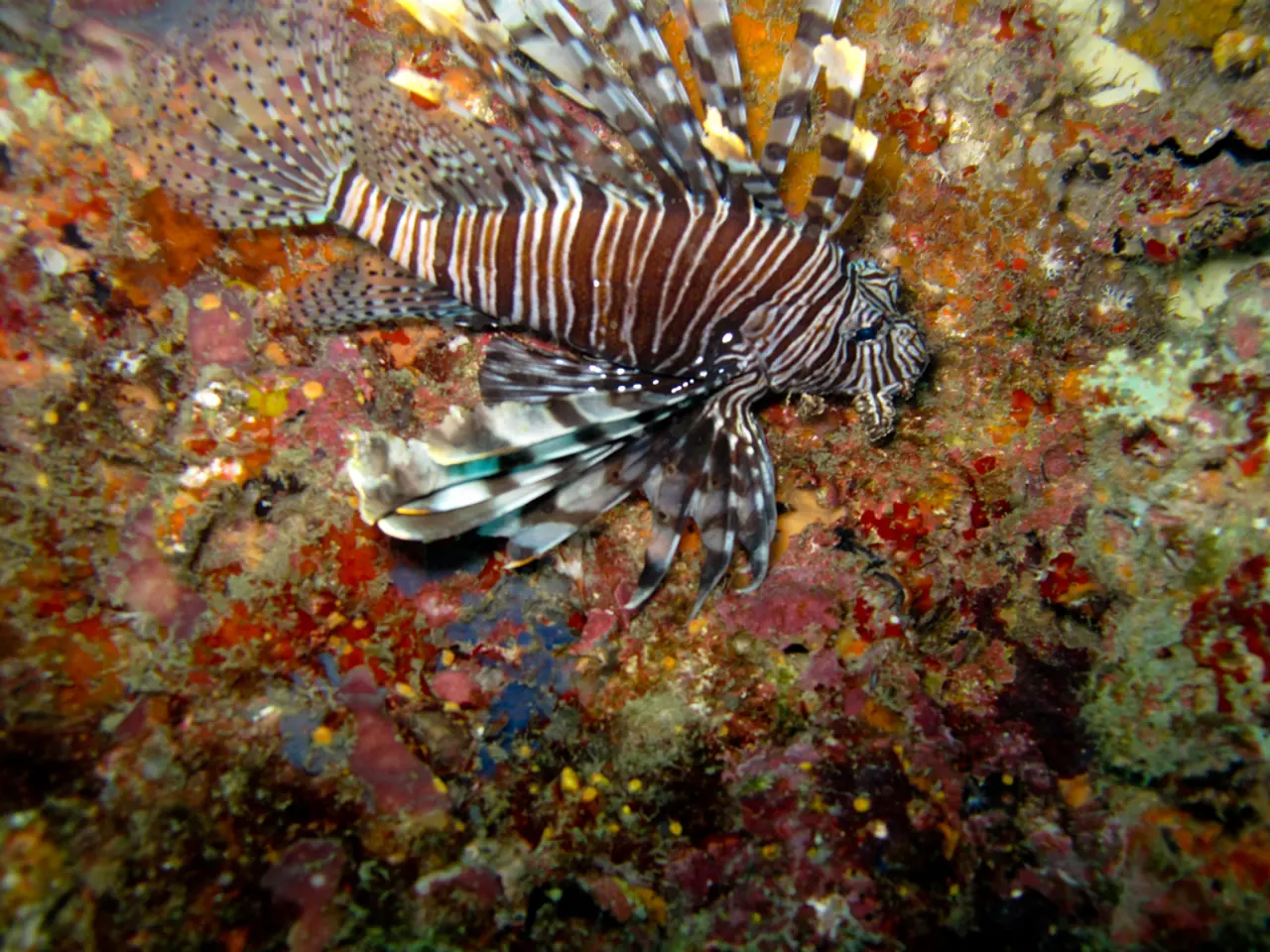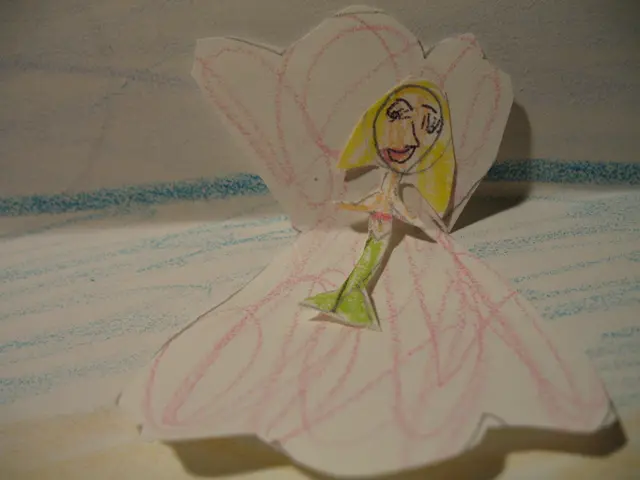Techniques for Capturing Aquatic Creatures on Camera
In the vast and colourful world beneath the waves, capturing the essence of aquatic life, particularly fish, can be a rewarding endeavour for underwater photographers. Here, we delve into some effective techniques for creating captivating fish portraits that highlight the character and environment of these fascinating creatures.
Schools of fish are often found in the corners of reefs and in higher current areas, making them easily accessible for photographers. When it comes to selecting subjects, the Blue-spotted goby, Mosshead warbonnet, Flutemouth, Striped triggerfish, Kelp rockfish, Elegant pipefish, Yellow boxfish, and Leafy sea dragon are just a few examples of the diverse marine life that can be photographed underwater.
To capture these elusive subjects, a fast-focusing dSLR camera and a fast prime lens are recommended. When shooting "blind" or close to the ground, using continuous focus mode can help ensure focus. For compact users, zooming all the way in is essential when photographing small, fast, or skittish fish.
Spending time watching a fish to understand its behaviour and patterns is crucial. With fish like the Mosshead warbonnet, Flutemouth, Striped triggerfish, and Yellow boxfish, patience is key as they usually stay around the same area and will eventually get used to you.
Being close to your subject reduces the amount of water between you and the fish, resulting in sharper images and better colour rendition. Using a wide-angle or fisheye lens allows you to get close while fitting the entire subject in the frame, adding an appealing effect without too many straight lines.
Optimising lighting is essential in underwater photography. Shoot on sunny days when sunlight penetrates the water for natural lighting. Use strobes or underwater flash properly positioned to restore colours like reds that water absorbs. The closer the strobe is to the fish, the truer and brighter the colours will be.
Proper camera settings are also crucial. Adjust aperture, shutter speed, and ISO carefully. For portraits, use manual or autofocus to keep the fish sharp. Shutter speeds around 1/15s to 1/30s can create soft effects for slow-moving fish, but faster speeds may be needed for sharp portraits.
Understanding fish behaviour and anticipating moments is key to capturing interesting poses or turning fish for dynamic portraits. Burst mode can help capture the best moment in a sequence. Experiment with angles and composition by trying various perspectives such as shooting from below, above, or side angles to add depth and interest. Use compositional rules like the rule of thirds or framing to highlight your subject against the background.
Framing your subject carefully is also important. Avoid backgrounds where the fish blends in; find contrasting backgrounds or use natural framing elements to make the fish stand out.
Combining these techniques will help create sharp, colourful, and engaging fish portraits that capture their character and environment effectively. Position your strobes before coming close to the fish, and make sure your camera is set to the proper aperture and shutter speed before taking photos. Fish portraits should focus on the head and face of the fish, preferably showing action or character, rather than identification images which often include all of the fish's fins, body, and head.
Some notable examples of fish portraits include the Rockfish photo taken by Jim Lyle in Catalina, California, the Baby sheephead at Catalina Island, Hawaii night dive, and the Sailfin Blenny in Cozumel. A 1.4x teleconverter can be used to extend the range of your lens for skittish fish, and a 100mm or longer lens is best for small, fast, or skittish fish when using a dSLR.
With these tips in mind, embark on your underwater photography journey and capture the beauty and intrigue of the marine world one fish portrait at a time.
- Schools of fish are generally found in the corners of reefs and higher current areas for easy access by photographers.
- The Blue-spotted goby, Mosshead warbonnet, Flutemouth, Striped triggerfish, Kelp rockfish, Elegant pipefish, Yellow boxfish, and Leafy sea dragon are examples of diverse marine life for underwater photography.
- A fast-focusing dSLR camera and a fast prime lens are recommended for capturing elusive subjects underwater.
- Using continuous focus mode can help ensure focus when shooting "blind" or close to the ground.
- For compact users, zooming all the way in is essential when photographing small, fast, or skittish fish.
- Spending time observing a fish to understand its behavior and patterns is crucial, particularly for fish like the Mosshead warbonnet, Flutemouth, Striped triggerfish, and Yellow boxfish.
- Being close to your subject reduces water between you and the fish, resulting in sharper images and better color rendition.
- A wide-angle or fisheye lens allows you to get close while fitting the entire subject in the frame, adding an appealing effect without straight lines.
- Optimizing lighting is essential in underwater photography, using sunlight for natural lighting and strobes or underwater flash to restore colors.
- Proper camera settings are crucial, with careful adjustment of aperture, shutter speed, and ISO necessary.
- For portraits, using manual or autofocus maintains the fish's sharpness, while shutter speeds between 1/15s and 1/30s create soft effects for slow-moving fish.
- Understanding fish behavior and anticipating moments helps capture interesting poses or dynamic portraits. Burst mode can help capture the best moment in a sequence, while experimenting with angles and composition adds depth and interest.
- Combining these techniques helps create sharp, colorful, and engaging fish portraits that effectively capture characters and environments, focusing on the head and face of the fish, showing action or character. Examples include the Rockfish photo by Jim Lyle, Baby sheephead at Catalina Island, and the Sailfin Blenny in Cozumel.




![Unveil My Top 10 Italian Hotels to Reserve with Rewards Points [2025 Edition]](/en/content/images/size/w640/format/webp/20250827114924_favorite-luxury-hotels-in.jpeg)


